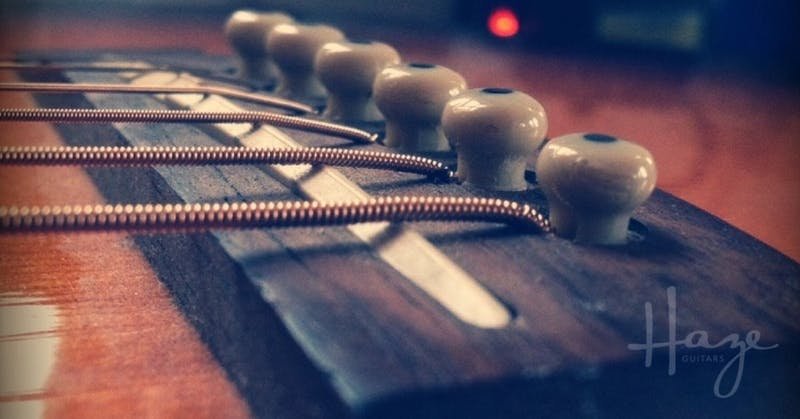Acoustic Guitar Action: Final Tips and Considerations
I'm going to round out this discussion on lowering acoustic guitar action with a couple of extra tips and an important consideration.
Tips first…
Look for shims
Sometimes — especially if there's an undersaddle pickup fitted — there may be one or more shims under the saddle. Or they might be under the pickup so they're not so obvious.
Look for shims and you might save yourself a heap of saddle-sanding hassle. Removing an existing shim will obviously allow the saddle to sit lower, achieving the same result as if you'd sanded material from the bottom.
If you're lifting the piezo undersaddle pickup to check, do be careful. They're delicate things, especially at the point where the hook-up wire joins the pickup strip. Be gentle.
Split Saddles
If your guitar has a split saddle fitted — two saddles instead of one, that's fine. When you're measuring and marking them, treat them as one saddle. Press their bottom edges to a straight edge and butt them end to end (in their correct orientation).
Then, just mark the amount to be removed from the bass and treble ends and draw a line across both saddles, pretending they're one single saddle.
Then sand each saddle carefully to its line.
For the pedants, yes, when installed in the bridge, the saddles have a very small overlap that's not accommodated by butting them end-to-end like this. Don't worry about it. It's nowhere near enough to make a difference in the real world. Just pretend it's one saddle.
String Break Angle
We've talked about saddle break angle before but it's definitely worth bringing it up again when we're talking about lowering action.
As the saddle gets lower, the angle the strings take over it (the break angle) becomes more shallow.
Too shallow, and the strings don't press on the saddle with so much pressure. This can badly affect a guitar's tone. And, any undersaddle relies on a sound, even pressure to do its job well. Amplified performance can be impacted even more obviously.
I'll reuse some example images that you'll have seen recently because this concept is really important here.
The saddle below has a pretty reasonable break angle. Not too high, not too low.
However, the saddle below is too low and the break angle too shallow — that bottom string passes over the saddle almost without a bend. That string's not going to sound great.
So, before you start sanding your guitar saddle, take a look at how it's sitting in the bridge and how the strings are currently 'breaking' over it. If it looks like lowering the saddle will result in a shallow break angle, you might want to consider whether that's the right call (especially if you have an undersaddle pickup).
This article written by Gerry Hayes and first published at hazeguitars.com


